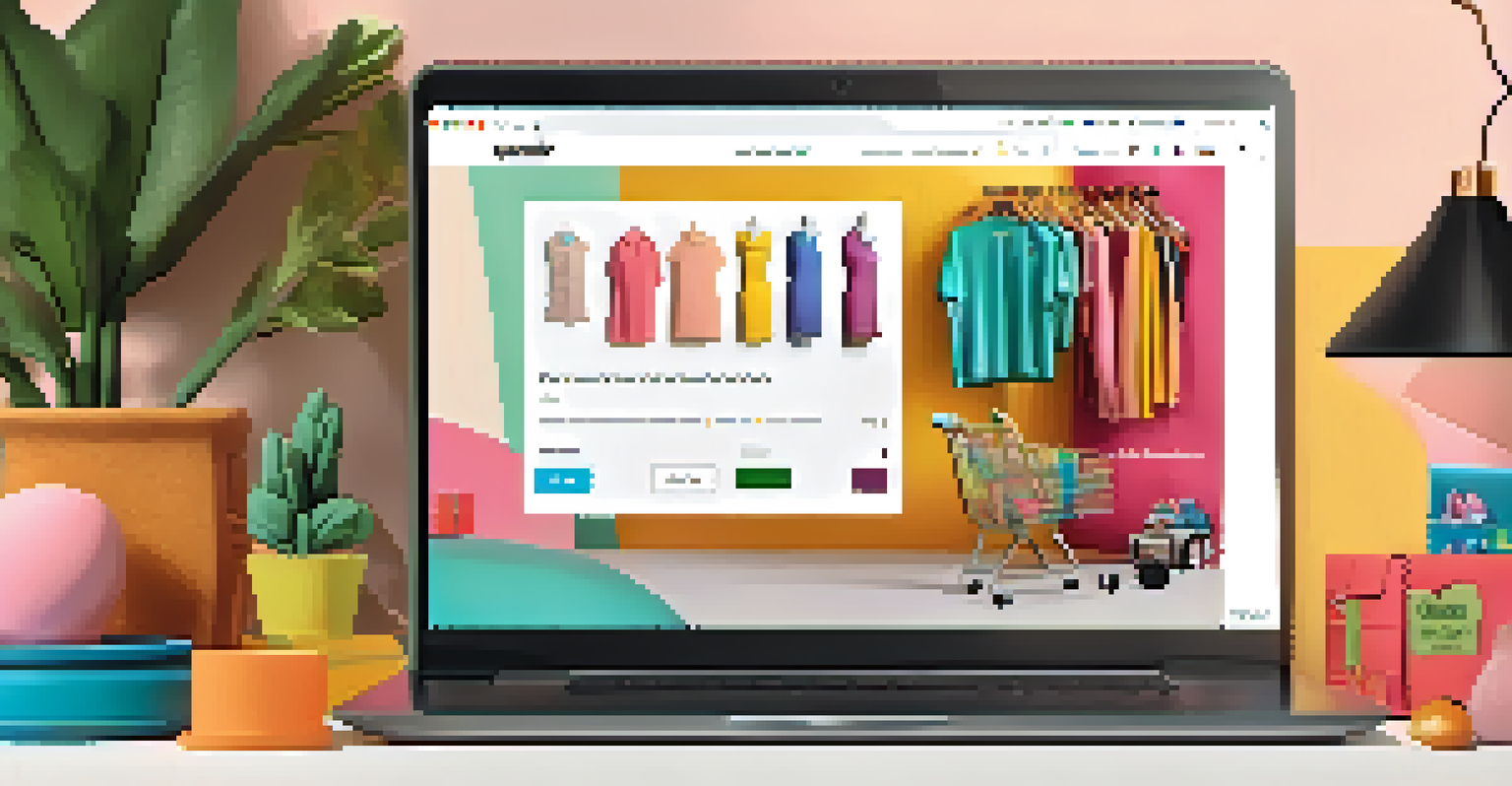B2B vs. B2C: Key Differences in E-Business Models

Defining B2B and B2C E-Business Models
B2B, or business-to-business, refers to transactions between companies, such as manufacturers and wholesalers. On the other hand, B2C, or business-to-consumer, involves businesses selling directly to individual consumers. Understanding these definitions is crucial as they represent two distinct approaches in the e-business landscape.
Customers don’t just buy products; they buy the experience and the relationship that comes with it.
In B2B, the focus is often on bulk transactions and long-term relationships, while B2C emphasizes the end-user experience. Picture a software company selling its product to a corporation versus a fashion brand selling a dress to a shopper online. Each model has unique dynamics that cater to different audiences and needs.
Recognizing these differences sets the stage for understanding how each model operates. As we dive deeper, we’ll explore areas like purchasing behavior, marketing strategies, and sales processes that further differentiate B2B from B2C.
Understanding Customer Relationships in B2B vs. B2C
In the B2B model, relationships are often built on trust and long-term partnerships. Companies invest significant time and resources into nurturing these relationships, as the sale typically involves larger commitments and ongoing service. Think of it like a marriage; both parties need to work together for the long haul.

Conversely, B2C relationships tend to be more transactional and focused on immediate satisfaction. Customers might shop around for the best price or the latest trend, often without forming a lasting bond with the brand. It’s somewhat like a summer fling—exciting, but often short-lived.
B2B vs. B2C: Key Differences
B2B focuses on long-term relationships and bulk transactions, while B2C emphasizes immediate consumer satisfaction and quick purchases.
Understanding these relational dynamics is essential for businesses to tailor their approaches. For B2B, nurturing long-term connections can lead to repeat business, while B2C companies might focus on customer loyalty programs to encourage repeat purchases.
Purchasing Processes: A Closer Look
B2B purchasing processes are generally more complex, often involving multiple stakeholders and lengthy decision-making cycles. For example, a tech firm might require approval from various departments before purchasing new software. This makes the sales process lengthy and requires detailed negotiations.
The key to successful B2B marketing is building relationships and providing value, not just selling products.
In contrast, B2C purchasing is usually straightforward and quicker. A consumer might browse an online store, add items to their cart, and check out within minutes. This simplicity is appealing and drives impulse buying, making the B2C model thrive on immediate transactions.
These contrasting purchasing processes highlight the importance of tailored sales strategies. B2B companies need to invest in relationship-building and detailed presentations, while B2C brands benefit from quick, user-friendly online experiences.
Marketing Strategies for B2B and B2C
B2B marketing often revolves around content-driven strategies, such as whitepapers, webinars, and case studies. These resources help educate potential clients and position the company as an industry expert. Think of it like attending a seminar; you want to learn from someone credible before making a decision.
On the flip side, B2C marketing leans heavily on emotional appeal and brand storytelling. Advertisements often focus on lifestyle aspirations, using engaging visuals and relatable messages to connect with consumers. Picture a vibrant ad showcasing a family enjoying a product together—it’s all about evoking feelings.
Distinct Marketing Strategies
B2B marketing relies on content-driven approaches to build trust, whereas B2C marketing uses emotional appeal and storytelling to connect with consumers.
Understanding the right marketing approach for each model is crucial for success. While B2B companies focus on education and trust, B2C businesses thrive on emotional connections and quick engagement.
Sales Cycle Differences Between B2B and B2C
The sales cycle in B2B environments is usually longer, with several stages that require patience and persistence. There might be multiple meetings, presentations, and negotiations before a deal is finalized. This extended cycle demands a strategic approach to keep potential clients engaged without overwhelming them.
In contrast, B2C sales cycles are much shorter, often concluding in just a few hours or even minutes. Consumers are typically ready to buy based on desire or need, leading to quicker conversions. Think about how quickly someone might buy a new gadget they’ve been eyeing.
Recognizing these differences helps businesses strategize their sales efforts effectively. While B2B firms need to cultivate leads over time, B2C companies can capitalize on impulse purchases through effective marketing.
Revenue Models: B2B vs. B2C Insights
B2B companies often rely on subscription-based or recurring revenue models. This approach ensures a steady cash flow and long-term client engagement. For instance, a software company may charge businesses a monthly fee for access to its platform, creating predictable income.
On the other hand, B2C businesses typically rely on one-time purchases, although many are now exploring subscription options too. Think of subscription boxes that deliver products regularly—this model is gaining popularity in the B2C space but still differs from the traditional model.
Evolving Customer Support Models
B2B customer support is personalized and hands-on, while B2C typically utilizes automated responses and standardized systems for efficiency.
Understanding these revenue models is vital for financial planning. B2B companies can forecast revenues more accurately due to predictable subscriptions, while B2C firms may need to focus on driving volume sales and repeat purchases.
Customer Support: B2B vs. B2C Approaches
Customer support in B2B is often more personalized and hands-on, reflecting the complex nature of the transactions involved. Businesses may require dedicated account managers or support teams to address specific needs and ensure smooth service delivery. This level of support is akin to having a personal coach in your corner.
In contrast, B2C customer support is usually more standardized, often relying on FAQs, chatbots, and automated responses. While efficiency is key here, it lacks the personal touch of B2B support. Imagine having a quick question about your recent purchase and getting a generic response rather than a tailored solution.

Understanding these support dynamics helps businesses enhance customer satisfaction. B2B companies must prioritize personalized service, while B2C brands can leverage technology to deliver prompt support.
The Future of B2B and B2C E-Business Models
As technology continues to evolve, both B2B and B2C models are adapting to meet changing consumer expectations. Automation and AI are playing a significant role in streamlining processes for both sectors. For example, B2B companies may use AI to analyze customer data and improve decision-making, enhancing their offerings.
Similarly, B2C companies are leveraging technology for personalized shopping experiences, utilizing data to recommend products based on user preferences. It’s like having a personal shopper who knows your tastes inside and out, making the buying process more enjoyable.
Looking ahead, the lines between B2B and B2C may blur further as businesses adopt hybrid models. Companies that can effectively navigate these changes will likely thrive in the ever-evolving e-business landscape.